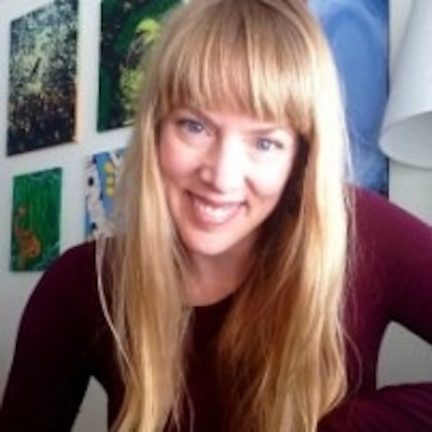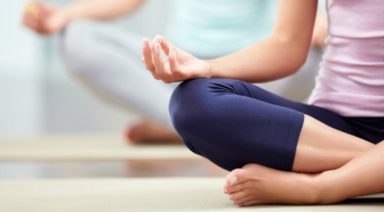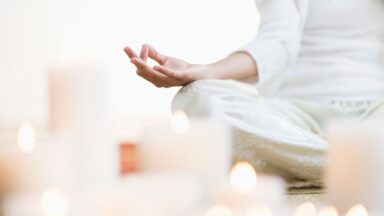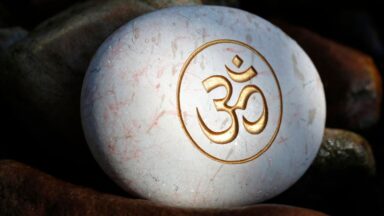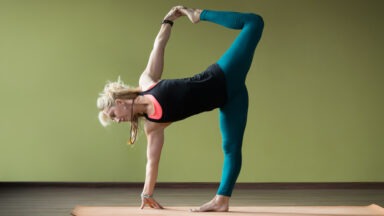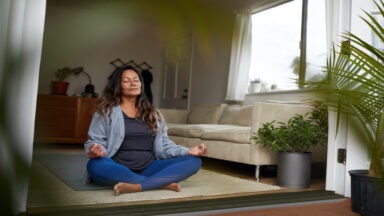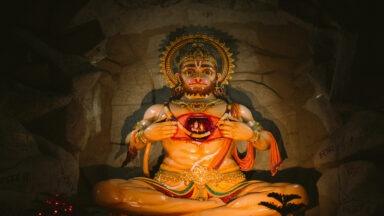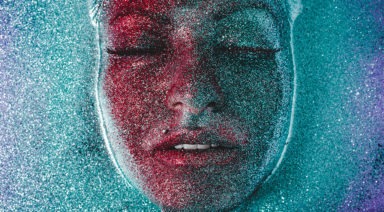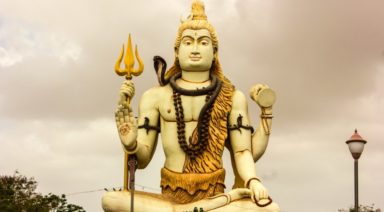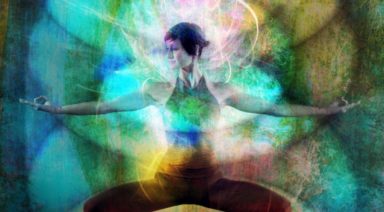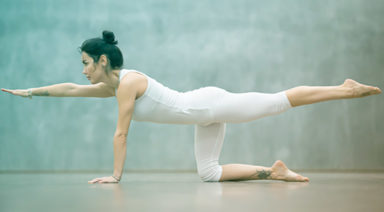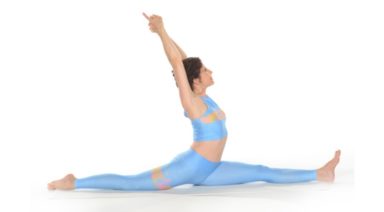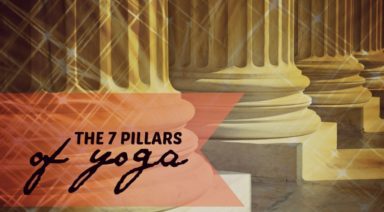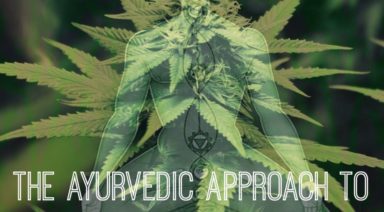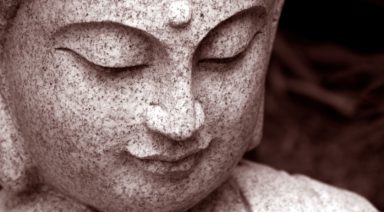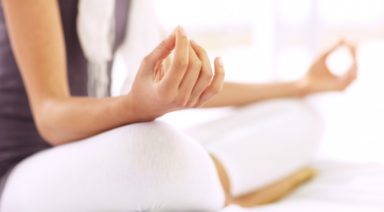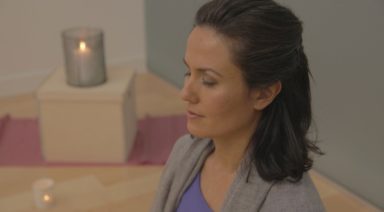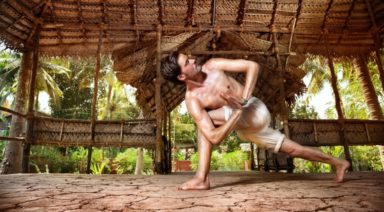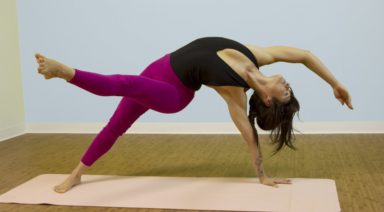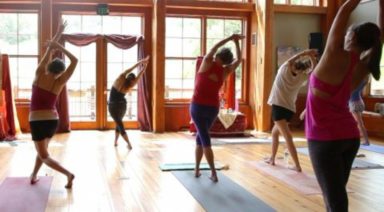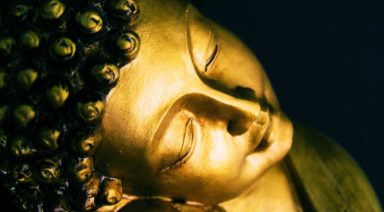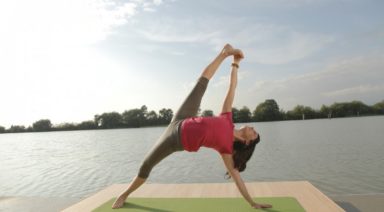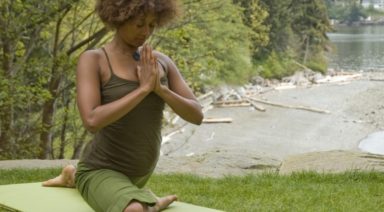The Science of Yoga
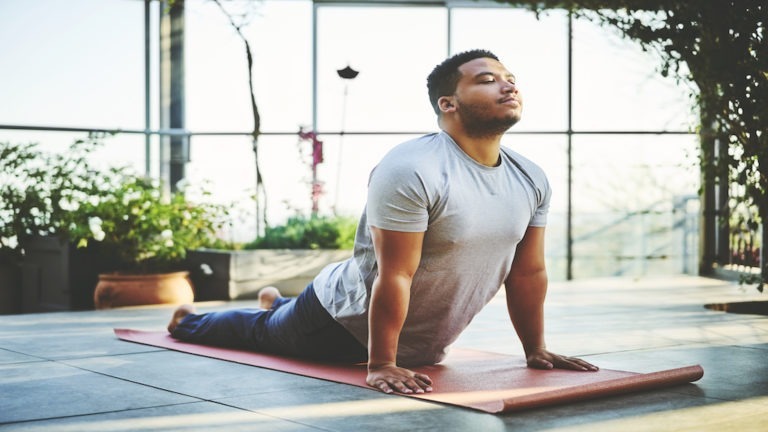
Stress has become a way of life. Whether the days are full of multiple goals and endless obligations, traffic jams and transit delays, complex systems of bureaucracy and finance, or an overwhelming array of in-person and virtual relationships, the pace of current human existence is bursting at the seams.
For centuries, sages have relied on yoga to transcend earthly limitations. Each meditative pose is an effort to identify pockets of pain that accumulate inside the body. Each inhale confronts suffering. Each exhale is an attempt to transcend it. Through this process, worry is replaced with loving-kindness.
Now, bodies of research are proving that yoga is more than a niche spiritual force for enlightened beings.
Yoga has the power to heal the world, one human at a time.
The Rise of Yoga
A system of poses, breathing exercises, and meditations that originated in ancient India to inspire physical, mental, and spiritual well-being first started to spread around the world as a form of exercise in the twentieth century.
For decades, in the US, yoga seemed to capture the interests of quirky, white city dwellers and affluent suburbanite moms, but over the last decade, it has expanded from the studio and can currently be found in public parks, hospitals, outpatient clinics, workspaces, elementary schools, military bases, rehab centers, and even airports.
In fact, the 2016 Yoga in America Study commissioned, by Yoga Journal and Yoga Alliance, estimated that more than 36 million people were practicing yoga in the US by 2015, compared to 20.4 million in 2012. A staggering 80 million people are likely to try yoga in 2016.
The Origins of Yoga
Yoga is first mentioned in the Bhagavad Gita, an ancient collection of Sanskrit poetry that is sacred to the Hindu religion, dating as far back as the second century BCE. Verse 48 of Chapter Two essentially describes yoga as a state of equilibrium.
In the series Introduction to Yoga Sutras, Nicolai Bachman references the authoritative text on yoga to explore what it means to live a yogi life. He teaches that yoga is a path to positive transformation. Through a dedicated yoga practice, one can root out negativity and plant loving kindness. Citing Sutra 1.2, “yoga-citta-vritti-nirodhah,” Bachman describes yoga as a powerful tool for calming the noise.
While the validity of ancient texts may invite skepticism, the first professional-level medical textbook on yoga was released in the US in 2016. In Chapter One, “Introduction to Yoga in Health Care,” licensed medical practitioners recognize the importance of developing habits that balance emotions and modify unhealthy thought-patterns and acknowledge that yoga can play an integral role in preventing disease.
Yoga for Better Sex: Bring Your Practice into the Bedroom

Do you love sex (and yoga)? Explore yoga poses for better sex and tips on how to improve one of the most important aspects of your well-being, your love life.
It’s natural to let inhibitions like fear, self-criticism and doubt take away the pleasure of one of the most satisfying things you can do with your loved one.
These yoga poses for better sex will help you improve your flexibility, ability to breathe fully, and strength, as well as teach you to be more in tune with your partner. To open your heart is to open your body and with these movements, you will learn what it is like to both give yourself to another and be open to receiving.
Tone and Open Your Pelvic Floor
In a 48-minute video on how to gain sovereignty over your sexuality taught by instructor Ashleigh Sergeant that focuses on bringing energy into the pelvic-floor region through the act of opening and toning. In these yoga poses for better sex, the focus is awareness, particularly on the energetic awareness of the pelvic floor.
“Other forms of movement and exercise don’t necessarily target areas of the pelvis,” says yoga teacher and founder of Hamna Shida Yoga in Venice, California, Molly Mitchell-Hardt. “With sex, you’re going to want blood flow in the pelvic region and the whole body. Even Warrior One helps bring blood flow to the pelvis.”
Now Begins Your Yogasmic Journey
In a sexy 22-minute video, embark on a yogasmic journey taught by instructor Hemalayaa Behl. This practice focuses on opening up your inner channels with liberating movement and sound. It teaches you as a practitioner to let go of those inhibitions that you’re holding onto and gives you a chance to scream like a monkey. You might want to get your wild animal on alone for this video.
“In yoga, we sensitize ourselves to ourselves. We often try to desensitize ourselves in life, but in yoga, we are aware of breath, movement and sensation.”
Molly Mitchell-Hardt
Finding Balance and Creativity in Your Sacral Chakra
Learn how to create freedom in this relaxing 73-minute video taught by instructor Faith Hunter that focuses on the power of the second chakra, known most commonly as the Sacral Chakra. This creative energy center, governed by the element of water and located in the pelvis, near the sacrum, promotes our ability to enjoy life in physical ways.
“The second chakra is our creative center. It creates life, birth ideas and brings dreams to reality. It is the passageway into the ovaries and testicles. Your whole reproductive center is attached to the second chakra.”
Molly Mitchell-Hardt
Pranayama Breathing and the Holistic Benefits of Yoga
Explore tantric yoga in this gentle 51-minute video taught by instructor Pedro Franco that focuses on the breath and helps to activate the chakra system and kundalini energies within the body. You’re going to want to find a quiet space for this video so that you can focus on the sound of your breath in silence.
“Sit cross-legged in a comfortable seated position and create circles with your chest. This evokes sensuality but also awakens the root chakra. You have to wake up the root to wake up everything else.”
Molly Mitchell-Hardt
Yoga for Improving Your Sexual Health
Learn how to improve your sexual health in this fun 44-minute video taught by instructor Jesse Enright that focuses on movement, mobility and strength. Through a series of energetic practices, you will learn muscular control, body intelligence and how to channel sexual energy.
Strengthen Your Pelvic Floor Through Kundalini
Awaken your sexual side in this 31-minute Kundalini-inspired video taught by instructor Lindsey Lewis that focuses on the second chakra. You will learn how to tap into the power and awareness of Kundalini energy, which is often associated with the divine energy of Tantra, the idea of being “woven together” with God through both the physical and spiritual.
“Yoga is an opportunity to fall in love with yourself, not in a narcissistic way, but in a truly genuine way. It is an opportunity to enjoy yourself. As an extension of that, you can only truly enjoy the company of someone else in a fully uninhibited way.”
Molly Mitchell-Hardt
Strengthen Your Lower Core
Find your roots and dig deep in this foundational 26-minute video taught by instructor Cameron Gilley that focuses on strengthening and opening the Root Chakra. The Root Chakra is the first energy center of the body and is affiliated with the adrenal glands. In this video, you will complete a hatha flow and spend a lot of time focusing on the basics, working on finding balance and creating stability by charging up the power center of your body.
Get Your Om On and Optimize Your Sexual Pleasure
Enliven your sex life with this essential 46-minute video taught by instructor Samantha S. Brown, where you will bring attention to your heart’s center. Learning how to breathe through your pelvis and open your back, you will see how connection to nature and others comes from the inside out. Opening your lower back will offer you a greater capacity for pleasure.
“Fluid, liquid movements of the spine provoke sensuality.”
Molly Mitchell-Hardt
Become More Tuned In to Your Sexual Experience
Tune into your sexual experience with synchronicity in this subtle 23-minute video taught by instructor Ashley Turner, opening your body to range of motion and allowing you to become more tuned in to your sexual experience. You will be guided to understand the difference between having sex and making love. Through self-love and awareness, learn how to be a more generous lover and become more open to receiving love.
Feel Good in Your Own Body
Find the constant orgasm in this empowering 73-minute video taught by instructor Meghan Currie. In this sultry sequence, you will learn the power of feeling good in your own body and how being in the moment allows you to better connect with another. Be prepared to bend, tone, sweat and build stamina for a rockin’ sex life.
“Sex can feel very primal and animalistic, but we are also able to make love and unite in a deeper way.”
Molly Mitchell-Hardt
Beginner Level Partner Yoga
Explore partner yoga in this awakening 26-minute video taught by instructor Pedro Franco. You will learn how to connect with another through this beginner partner sequence. Get a greater sense of your own alignment through the movements of your partner. Play with a friend or loved one in this fun, introductory video.
In the name of love and better sex, build connection and intimacy with the yoga!

